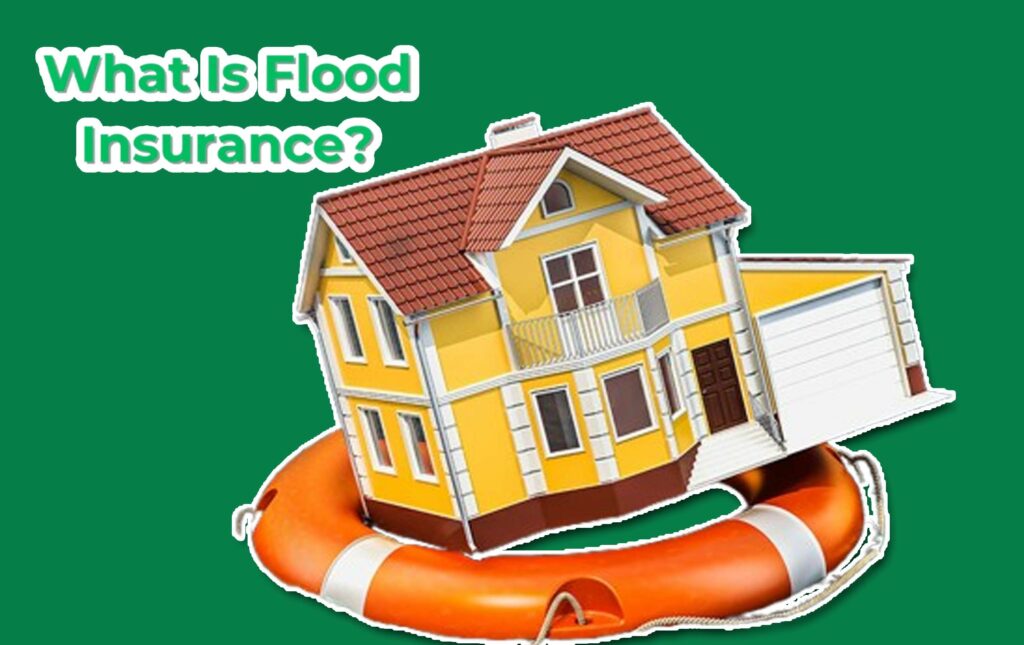FHow Flood Insurance Works – Flooding is one of the most devastating natural disasters, capable of causing extensive damage to homes, businesses, and communities in a matter of hours. Whether caused by heavy rainfall, overflowing rivers, melting snow, storm surges, or broken dams, floods can leave property owners facing huge financial losses. Unfortunately, standard property insurance policies often exclude flood damage, which is why flood insurance exists.

This guide explains what flood insurance is, how it works, what it covers, and how to get it, so you can make an informed decision about protecting your property.
What is Flood Insurance?
Flood insurance is a specialized type of property insurance designed to protect buildings and personal belongings from losses caused by flooding. A flood, in this context, generally refers to water covering normally dry land due to natural or man-made causes.
Floods can happen anywhere from coastal regions to inland towns and they often strike without warning. In recent years, unpredictable weather patterns and climate change have increased the frequency and severity of floods worldwide, making flood insurance an important safety net.
Why Flood Insurance is Important
Many property owners mistakenly believe their regular homeowners or business insurance covers floods, but in most cases, it does not. Without flood insurance, you would be responsible for covering the full cost of repairing or rebuilding your property, replacing damaged belongings, and restoring your business operations.
Flood insurance provides financial support to help you recover faster and reduce the burden of disaster-related expenses.
How Flood Insurance Works
Flood insurance works by offering coverage for specific types of damage caused directly by flooding. When you purchase a policy, you agree to pay a premium based on factors such as your property’s location, building type, and the level of coverage you choose. In the event of a covered flood, you can file a claim, and your insurer will pay out up to your policy’s limit after you pay any applicable deductible.
The process generally follows these steps:
- Policy Purchase: You buy flood insurance from an insurance provider or government program (depending on your country).
- Coverage Period: Once active, your policy will cover you for a set period, usually one year, renewable annually.
- Flood Event: If a flood occurs and damages your insured property, you notify your insurer and file a claim.
- Assessment: An adjuster inspects the damage and determines the compensation amount.
- Payout: The insurer pays you based on the coverage terms, minus any deductible.
What Flood Insurance Covers
Flood insurance typically offers two main types of coverage:
Building Coverage
Protects the structure of your property, including:
- Walls, floors, and ceilings
- Foundations and support structures
- Plumbing and electrical systems
- Heating and cooling systems
- Permanently installed fixtures, appliances, and cabinets
- Detached garages and certain outbuildings (in some policies)
Contents Coverage
Covers your personal belongings, such as:
- Furniture and rugs
- Clothing and shoes
- Electronics and home appliances
- Kitchenware and household items
- Certain valuables, within policy limits
What Flood Insurance Does Not Cover
Flood insurance does not cover everything. Common exclusions include:
- Damage from moisture, mildew, or mold that could have been prevented
- Damage to landscaping, trees, or fences
- Cars and other vehicles (covered under auto insurance if applicable)
- Temporary housing expenses (unless stated in the policy)
- Currency, precious metals, and important paper documents
Factors That Affect Flood Insurance Costs
The cost of flood insurance depends on:
- Location: Properties in high-risk flood areas generally cost more to insure.
- Elevation: Buildings at higher elevations may pay lower premiums.
- Type of Coverage: Higher coverage limits or lower deductibles increase premiums.
- Construction: Building materials and design can affect risk levels.
- Local Flood History: Areas that have experienced repeated flooding may face higher costs.
How to Get Flood Insurance
In this section of the article, we will discuss how to get flood insurance.Here’s how to secure flood insurance for your property:
- Contact Your Insurance Provider: Check if they offer flood coverage.
- Assess Your Risk: Use online flood maps or local government resources to understand your flood risk level.
- Choose Coverage Limits: Decide how much building and contents coverage you need.
- Review Policy Terms: Read exclusions, waiting periods, and claim procedures carefully.
- Purchase and Maintain the Policy: Pay premiums on time to ensure continuous coverage.
Final Thoughts
Flood insurance is a vital safeguard for anyone who owns property in flood-prone areas and even for those who think they are safe. Floods can occur anywhere, and the financial impact can be devastating. Understanding how flood insurance works and securing the right coverage, you can protect your property, belongings, and peace of mind from nature’s most unpredictable disaster.



